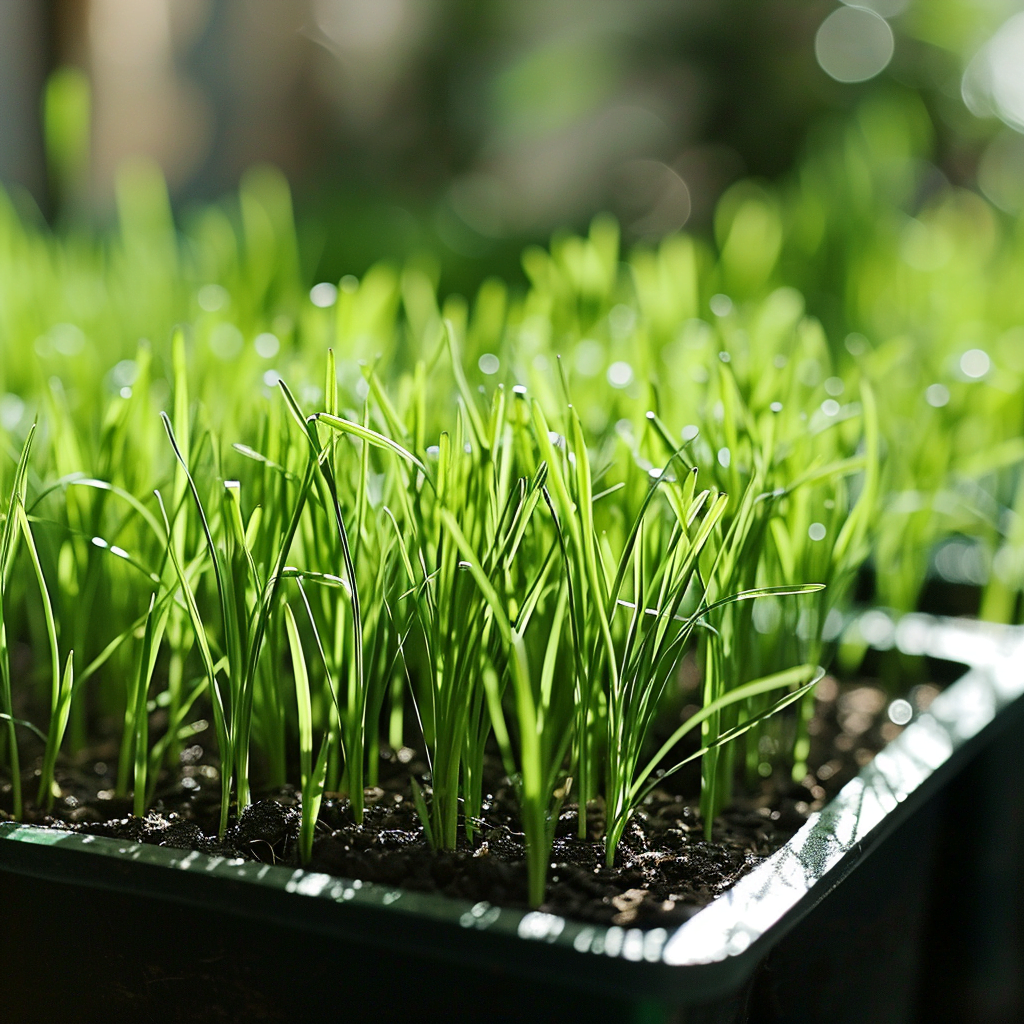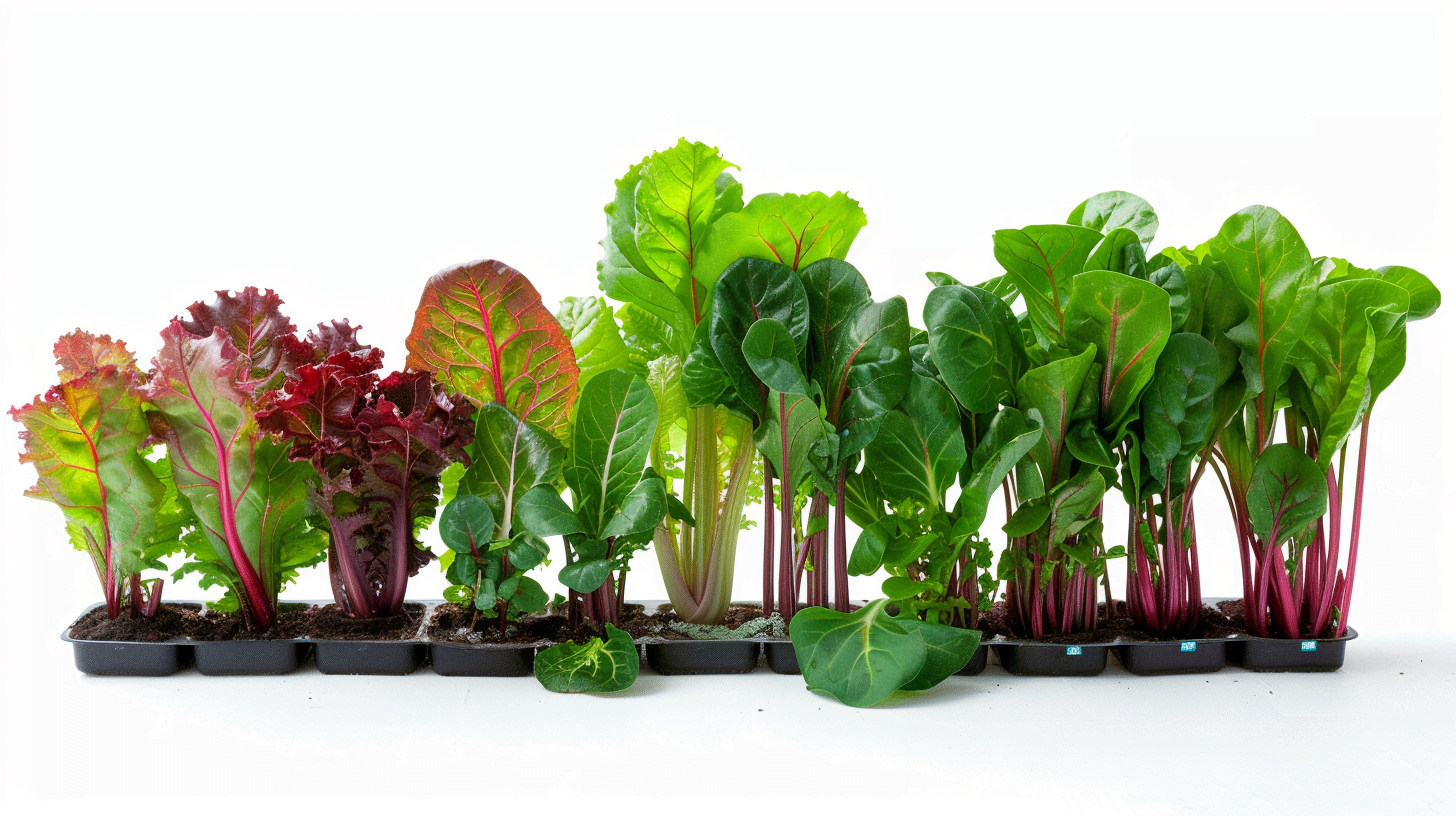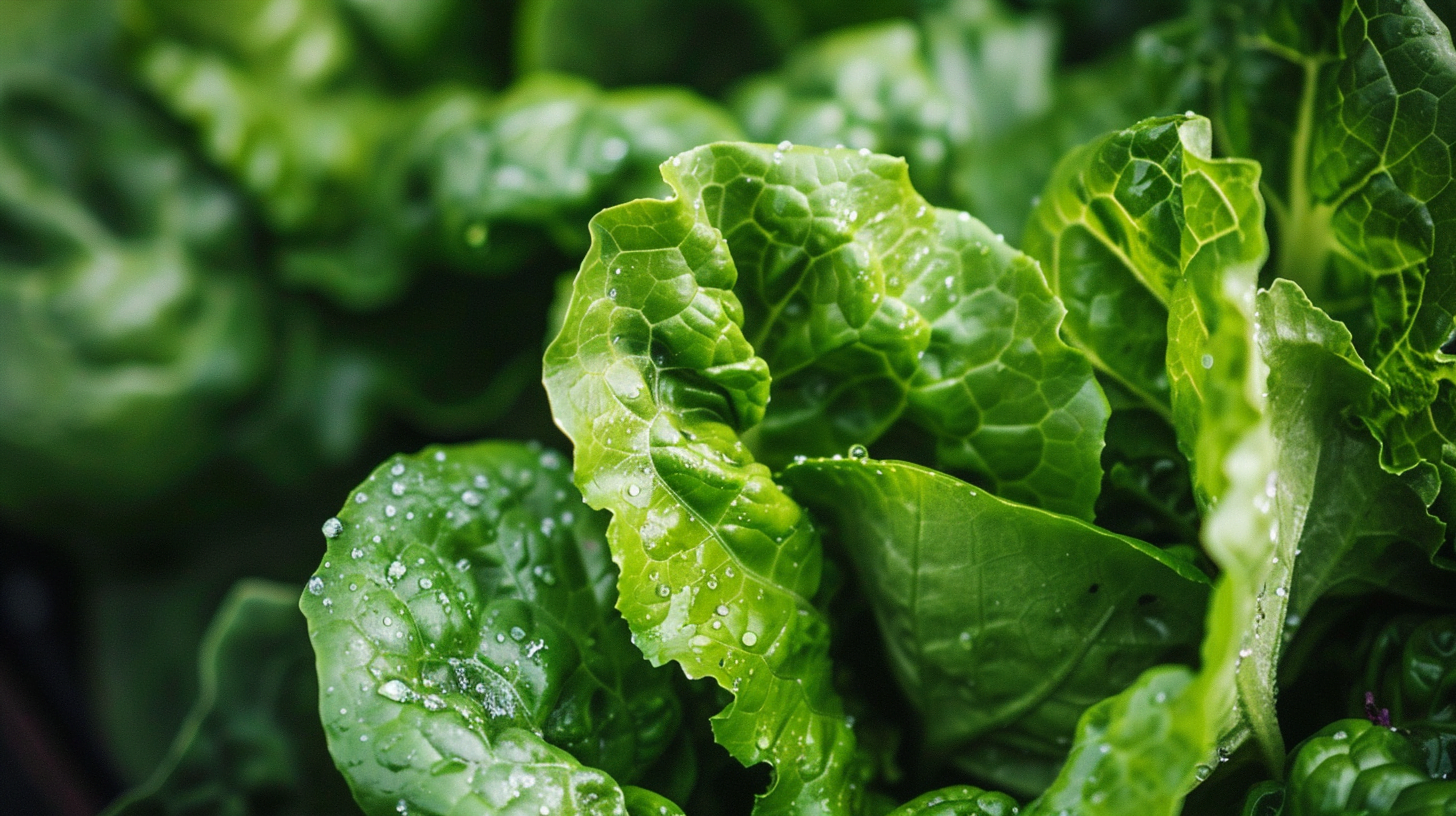Introduction
Wheatgrass is the young grass shoots of the common wheat plant, Triticum aestivum. It contains high concentrations of chlorophyll, vitamins, minerals and antioxidants. Wheatgrass is often juiced or powdered to make nutritional supplements due to its health benefits.
Hydroponics is the method of growing plants without soil, using mineral nutrient solutions in a water solvent. With hydroponics, the roots have constant access to oxygen and nutrients, leading to faster growth rates. Hydroponics allows cultivation in places without adequate soil, and precise control over nutrients.
Many people wonder can i grow wheatgrass hydroponically to maximize growth speed and nutritional quality. The answer is yes, wheatgrass can be grown hydroponically with excellent results.
Benefits of Growing Wheatgrass Hydroponically
- Faster growth rate – Hydroponic wheatgrass matures around 7-10 days faster than soil growing. The roots have immediate access to nutrients and water without obstruction.
- Avoid soil-borne diseases – Hydroponics provides a sterile, controlled environment. There is no risk of fungi, bacteria, viruses, nematodes, etc. from contaminated soil.
- Precise control over nutrients – The exact mineral composition delivered to roots can be monitored and optimized for peak nutrition in the shoots.
- Conserve water usage – Hydroponics requires 70-90% less water usage compared to conventional irrigation. Recirculating systems reuse nutrient solutions.
- Easily grown year-round – With environmental controls, wheatgrass can be grown in any season indoors or outdoors in hydro systems.
- Higher density cultivation – More wheatgrass plants can be grown per square foot since no space is needed for soil.
- Automation friendly – Hydroponics makes it easier to create automated systems for watering, lighting, nutrients etc.
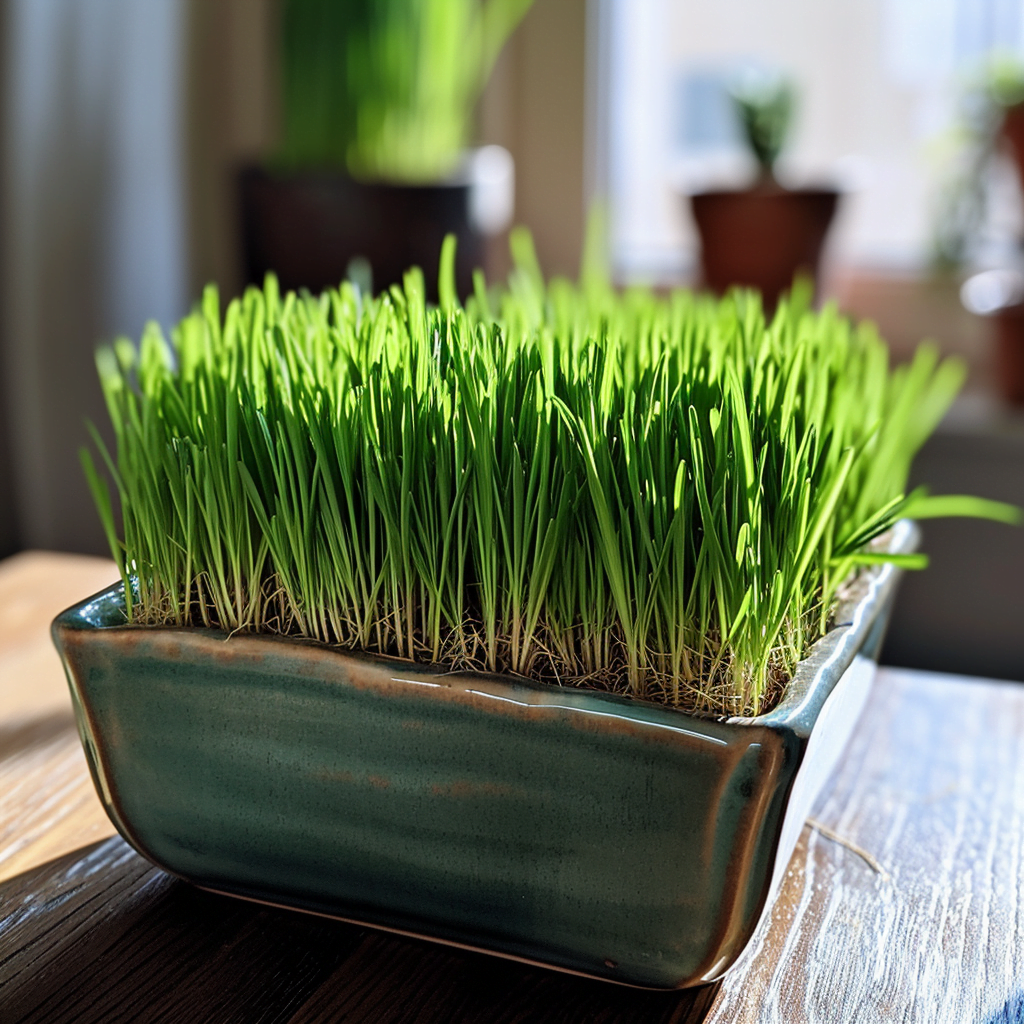
Challenges of Growing Wheatgrass Hydroponically
- Requires some specialty equipment – A hydroponic system must be purchased or built, though basic systems can be inexpensive.
- Nutrient levels must be monitored – Improperly mixed solutions or pH can result in nutrient deficiencies and “tip burn” of leaves.
- Doesn’t develop extensive roots – Hydroponic wheatgrass focuses energy on shoot growth rather than roots, changing texture.
- Prone to rapid drying – Without a soil buffer, wheatgrass in hydro systems needs more frequent watering and humidity management.
- Initial learning curve – There is a learning process to gain experience with hydroponic monitoring and maintenance.
- Susceptible to pump failures – System outages can rapidly lead to root drying. Backup pumps are recommended.
- Chance of rapid nutrient imbalance – A poorly mixed batch of nutrients can spread problems quickly.
Reasons To Grow Wheatgrass Hydroponically
Beyond the general advantages of hydroponics, there are some specific benefits for growing wheatgrass in water instead of soil:
- Exceptional nutrition – Hydroponic methods allow perfect control over the nutrients available to the wheatgrass roots. This leads to an ideal nutritional profile in the harvested shoots.
- Rapid maturity – Wheatgrass grown hydroponically finishes growing and is ready for harvest more quickly than soil-grown wheatgrass. The constant availability of nutrients accelerates growth.
- Year-round production – With hydroponics, wheatgrass can be grown in any season independent of outdoor conditions. Temperature, humidity, and light can be perfectly controlled.
- No pesticides needed – Hydroponics takes place in a sterile indoor environment. There are no field pests to contend with, eliminating the need for pesticides.
- Easy rinsing – Hydroponically grown wheatgrass can be harvested and rinsed very easily since the roots are not embedded in dirt and soil.
Hydroponic Systems for Wheatgrass
There are several types of hydroponic systems that can successfully grow wheatgrass:
- Deep Water Culture – Roots are fully immersed in an aerated nutrient solution. Simple and inexpensive.
- Ebb & Flow / Flood & Drain – Roots are flooded then drained periodically. Allows oxygen to roots.
- Drip System – Nutrients applied directly to the root zone via drippers. Less water usage.
- NFT (Nutrient Film Technique) – A thin film of nutrients flows continuously past the roots.
- Aeroponics – Roots are misted with a nutrient solution. Grows very rapidly.
- Raft System – Plants sit in floating foam rafts that move over the nutrient reservoir.
- Wick System – Nutrients wicked up to roots via capillary action through growing media. Passive system.
The choice depends on factors like space, cost, and level of control desired. Small home systems can be as simple as an aerated container, while commercial scale systems use automated hydroponic technology. Wheatgrass grows well across all types.
Nutrient Solutions for Hydroponic Wheatgrass
Specialized hydroponic nutrient blends can be purchased, or custom solutions can be created:
- Complete formulas – Popular pre-mixed options like General Hydroponics FloraSeries. Simple to use.
- Individual salts – Can mix your own from compounds like calcium nitrate, potassium phosphate etc. More control.
- Must provide macro and micronutrients – NPK, calcium, magnesium, sulfur plus iron, manganese, zinc and others.
- pH between 5.5-6.5 – Wheatgrass prefers a slightly acidic nutrient solution. Alkaline pH can cause lockout.
- EC of 1.2-1.6 mS/cm – The electrical conductivity measures total dissolved nutrients.
- Testing solution’s EC and pH – Crucial to monitor and adjust levels. Meters available for both.
- Developing custom solutions requires research – Consult published wheatgrass nutritional data.
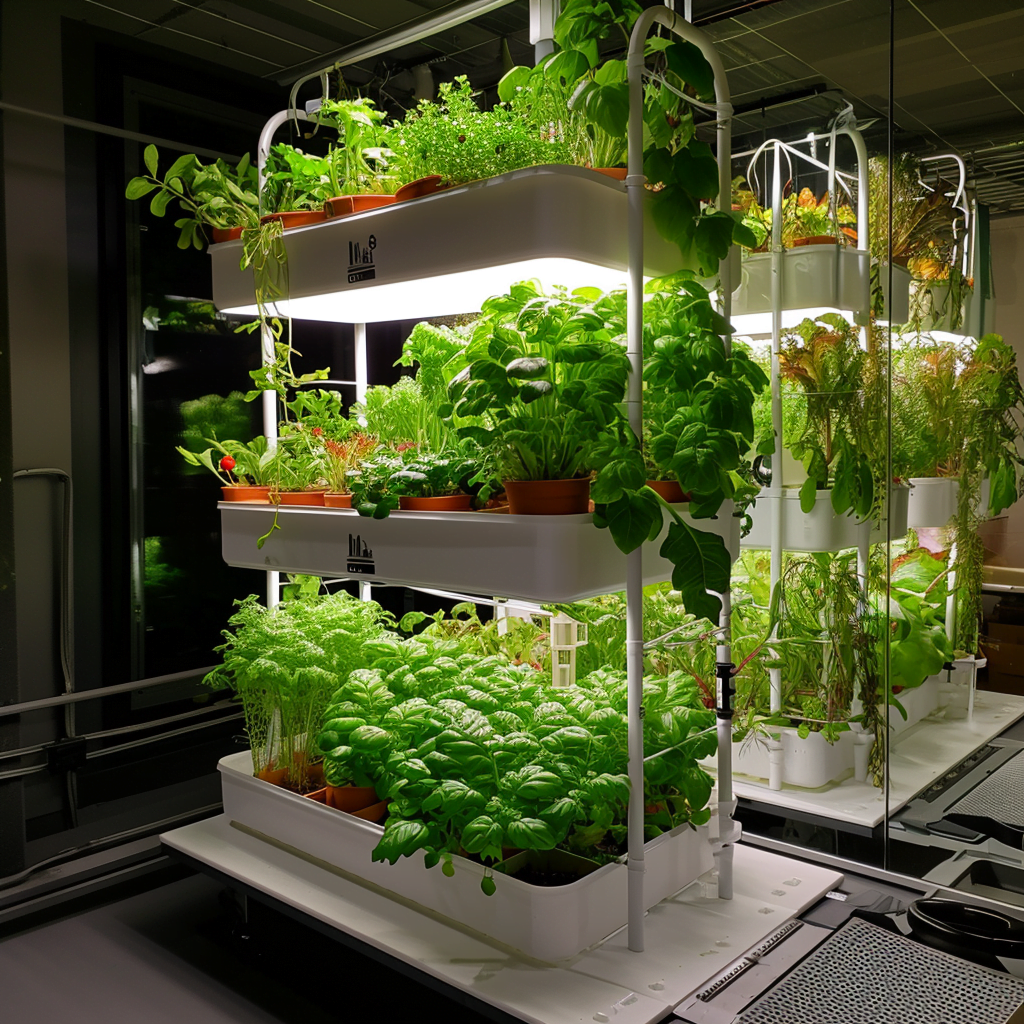
Growing Media for Wheatgrass Roots
Several growing media can support wheatgrass in hydroponic systems:
- Rockwool cubes – Preformed cubes made of spun rock fibers. Excellent water retention.
- Coconut coir – Made from coconut husks, sustainable and slows drying.
- Clay pellets – Porous clay pebbles allow great oxygenation of roots.
- No media (DWC, NFT) – In some systems, roots are exposed directly to nutrient solutions.
- Vermiculite – Absorbs nutrients and retains moisture well.
- Perlite – Inorganic mineral that creates highly aerated medium.
- Expanded clay – Similar to perlite. Lightweight and neutral pH.
- Peat or sphagnum moss – Retains lots of moisture and air pockets.
The growing media provides support, moisture retention, and some oxygenation of the root zone. Media is not essential but can be helpful.
Steps for Growing Wheatgrass Hydroponically
- Soak wheatgrass seeds for 8-12 hours to initiate sprouting.
- Rinse sprouted seeds 2x daily until the taproot emerges. Keep seeds in darkness.
- Transfer sprouted seeds to the chosen growing media like rockwool.
- Place growing media in hydroponic system. Keep moist but not soaked.
- Maintain air temperature between 65-75°F for optimal growth.
- Provide 14-18 hours of light per day using grow lights.
- Check pH and nutrient levels daily. Add nutrients and adjust pH as needed.
- Harvest shoots when they reach 6-8 inches tall, typically 7-10 days.
- Rinse harvested wheatgrass gently with clean water.
- Wheatgrass can be juiced, dehydrated, or blended into smoothies.
- Soak seeds and restart the growing process for continual harvests.
Tips for growing great hydroponic wheatgrass:
- Rinse seeds thoroughly 2-3 times per day to prevent mold growth.
- Keep reservoir water oxygenated with air stones or pumps.
- Maintain consistent temperature and humidity levels for robust growth.
- Check nutrient pH and EC levels daily to avoid problems.
- Use clean tools and equipment to minimize disease risks.
- Support mature wheatgrass stems to prevent drooping.
Harvesting and Processing Wheatgrass
- Use clean scissors/shears to cut wheatgrass near the base of the stems.
- Harvest when shoots reach 6-8 inches tall for best yield and nutrition.
- Wheatgrass starts losing nutrients immediately after harvesting. Use right away.
- Rinse gently under cool water to remove any residue. Pat dry with towels.
- Juice wheatgrass in a slow juicer or masticating juicer within 30 minutes of cutting.
- Or dehydrate wheatgrass at 104°F or below to retain nutrients. Then powderize.
- Can also freeze chopped wheatgrass in ice cube trays for future smoothies.
- Store fresh wheatgrass juice tightly sealed and refrigerated up to 3 days.
Health Benefits of Wheatgrass
Wheatgrass is prized as a superfood due to its dense nutritional profile. It contains:
- Chlorophyll – detioxifies the liver and blood. Similar health benefits as spinach.
- Vitamins A, C, E – powerful antioxidants that boost immunity.
- B Complex Vitamins – supports metabolism and cellular function.
- Minerals like iron, calcium, magnesium, potassium – essential macro and micro nutrients.
- Amino acids – provides a complete protein profile including essential amino acids.
- Enzymes – aids digestion and metabolic function.
- Antioxidants – reduces oxidative stress and free radical damage.
Studies show wheatgrass can:
- Improve red blood cell count and hemoglobin levels.
- Detoxify heavy metals within the body.
- Lower cholesterol and blood pressure.
- Reduce inflammation in arthritis and related diseases.
- Stimulate immunity against bacterial infections.
- Protect the liver from harmful toxins.
- Fight free radicals and premature aging.
- Aid in stabilizing blood sugar levels.
- Support gastrointestinal health and regularity.
While more research is still needed, the existing studies point to wheatgrass having protective effects across many aspects of health.
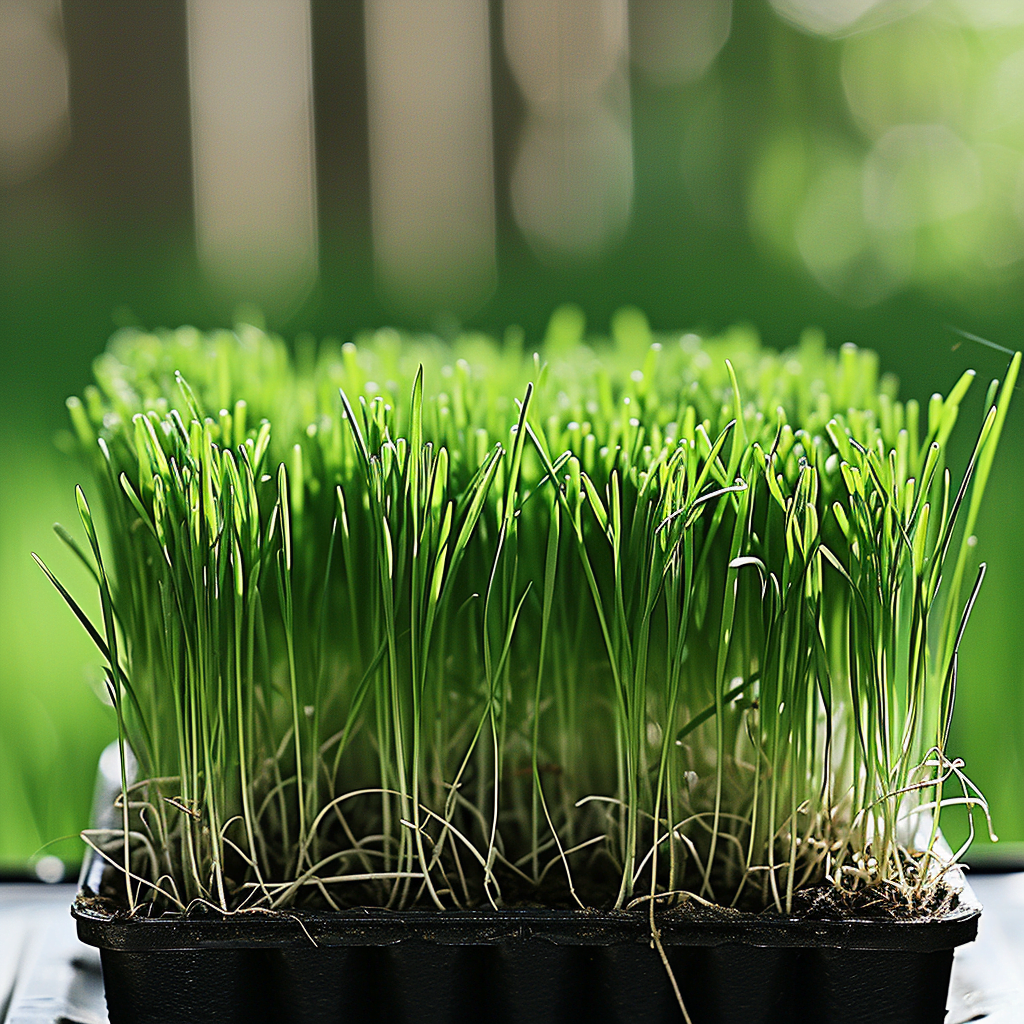
Hydroponic Wheatgrass vs Soil Grown
Hydroponically grown wheatgrass differs in a few key ways from traditional soil cultivation:
- Faster maturity by 7-10 days on average.
- Higher concentration of nutrients like amino acids and antioxidants.
- Lower counts of trace heavy metals that can accumulate in soils.
- Lighter green coloration due to less chlorophyll production.
- More tender texture and thinner cell wall composition.
- Milder and lighter taste, especially when juiced.
- Much easier to thoroughly wash off any residues before using.
- Lower potential for mold contamination.
Tips for Growing Wheatgrass Hydroponically
- Use a heat mat to maintain consistent warmth for germination and growth. Cool temps slow growth.
- Check pH and EC levels twice a day for fastest growth. Wheatgrass is sensitive to nutrient fluctuations.
- Keep grow lights on 18 hours per day for photosynthesis. Use LED grow lights for efficiency.
- Ensure the nutrient reservoir has sufficient oxygenation. Poor oxygen causes small roots.
- Change the nutrient solution every 7-10 days to prevent buildup of salts or organic matter.
- Wash hands and sterilize tools before handling to prevent mold and disease.
- Support mature wheatgrass stems with twist-ties or plant trainers to prevent drooping over.
- Test different wheatgrass varieties like Winter wheat or Triticale to find the best growth.
- Consider adding beneficial silica supplements like Armor Si to strengthen cell walls.
- Be prepared to replace pumps, air stones, and other equipment that can fail over time.
- Monitor humidity and keep around 60-70% to prevent tips from drying out.
- Start more seeds every 4 days for a continual harvest instead of one large batch.
Automating a Wheatgrass Hydroponic System
Several steps of a wheatgrass hydroponic system can be automated:
- Use a timer to control nutrient pumps and ensure regular feeding schedules.
- Connect pH and EC sensors to controllers to automatically maintain optimal levels.
- Utilize float valves in reservoirs to refill water and nutrients as needed.
- Control lighting schedules and intensity with a programmable LED system.
- Use thermostats to regulate temperature and exhaust fans for ventilation.
- Install humidistats with misters to keep optimal humidity range.
- Employ auto-dosers to inject nutrients concentrates on a set schedule.
- Leverage apps to remotely monitor conditions and receive alerts if parameters are off.
- Attach grow trays to conveyor systems or rotisseries for lighting exposure.
Automated hydroponics can reduce labor while optimizing yields and nutrition in wheatgrass.
Scaling Up a Commercial Wheatgrass Operation
To expand to commercial scale wheatgrass production:
- Design multi-tiered vertical systems to maximize use of space.
- Install large reservoir tanks for holding premixed nutrient solutions.
- Use raft, NFT, or aeroponic systems for high density planting.
- Add CO2 supplementation for accelerated growth rates.
- Implement semi-automated harvesting tools like cutters on tracks.
- Install high power LED grow lights optimized for spectrum and coverage.
- Control nutrient dosing with industrial-grade injection pumps.
- Monitor EC and pH with probes connected to a central computer system.
- Maintain temperatures with heat pumps and humidity with commercial misters.
- Plan for spare parts, redundant pumps, and backup power sources.
- Develop food safety protocols and standard operating procedures.
With the right equipment wheatgrass can be grown hydroponically on a commercial production scale.
Conclusion
Growing wheatgrass hydroponically offers numerous advantages over traditional soil cultivation. Wheatgrass thrives in sterile, controlled indoor hydroponic environments where nutrients are optimized and growth can be rapid. Hydroponically grown wheatgrass tends to be more nutritious, faster maturing, and easier to harvest compared to field grown varieties. Both small home systems and large commercial operations can produce excellent hydroponic wheatgrass using different equipment scales.
With some initial learning and testing, wheatgrass can be grown successfully using various hydroponic techniques. The faster harvests, year-round production, and high nutrition of hydroponic wheatgrass make it an excellent choice for anyone interested in juicing or powdering this superfood crop. The ability to precisely control nutrients and growth factors in water makes hydroponics an ideal way to cultivate wheatgrass.
